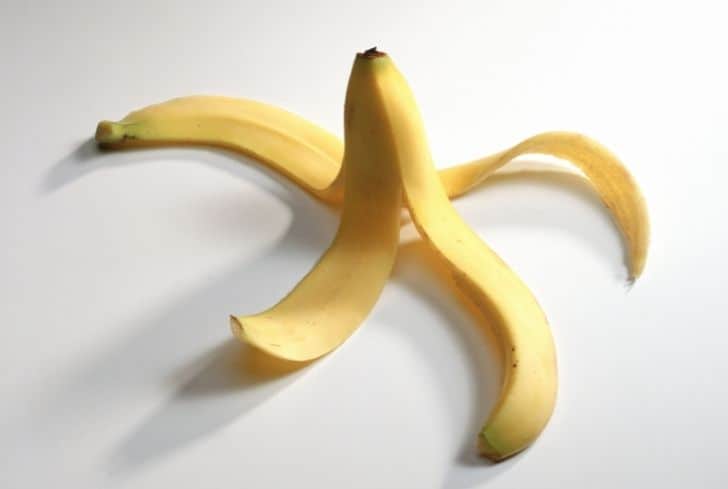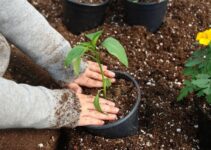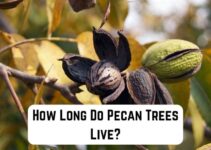Do you love flowers and roses in particular? If there’s anything out there that’s a symbol of love, it’s a rose. You might even love them so much that you’ve decided to plant a garden full of them.
If we take another wild guess, it could be that you overheard somewhere that roses are fed with bananas peels and are not sure you heard right. If you’re searching for answers, then you’re in the right place.
Taking good care of roses will help them bloom into the beautiful flowers that they are known for. However, this journey might sound intimidating and thorny. If this is how you feel, please, read on.
By the end of this blog post, you’ll have the technical know-how on how to plant roses and what to nurture them to make them bloom. Now, dive right in!
Are Banana Skins Good for Roses?
All living things need the right amount of nutrients to grow, with roses not being an exception. Nitrogen, phosphorus and potassium, and other trace elements like boron, chlorine, copper and iron need to be present in the right quantities in the soil for roses to reach their maximum potential. You can add these nutrients to the soil in the form of fertilizers which could be organic or inorganic.
Bananas contain potassium in very high quantities. Potassium fortifies the immune system of roses and prevents them from having weak stems, dull-looking leaves with brown edges and underdeveloped buds. Banana also contains calcium, iron, copper and manganese, which also help roses grow.
It’ll be a good idea to use banana peels to boost the nutrients available in the soil. While you can’t get away with using just banana peels to nurture roses, you’ll significantly reduce the cost of buying fertilizers as you already have an essential nutrient available with very little to no cost.
But of course, we’ve assumed that you bought the banana for your own consumption. The best part is that you don’t need to compost the banana peels before feeding them to roses.
You might be wondering how exactly you would feed the banana peels to the roses. Don’t worry, we’re getting right to that.
Feeding bananas to roses is pretty straightforward. You don’t even have to compost the banana peels before they could be of use to the roses. When you’re planting new roses, simply dig the hole where the rose is to be planted, then place the banana peels at the base of the rose and mix it with sand.
You could also use banana peels on roses that have already been planted by simply putting the banana peels close to the roses. Chopping the banana peels into bits will allow them to decompose and be absorbed by the soil faster.
Are Banana Peels Good For all Plants?
All plants need an adequate amount of nutrients to flourish. You can add these nutrients to the soil through fertilizers, which can be organic or synthetic. It has been discovered that organic fertilizers are much better for plants than inorganic fertilizers for several reasons.
Banana peels are the highest organic source of potassium. Plants need potassium in large quantities throughout their life cycle and also during the nitrogen metabolism process.
Using banana peels as organic fertilizer is advantageous for any plant in that it helps improve the soil’s ability to hold on to nutrients and water. Banana peels in the soil also aid the existence of the necessary microbes needed to break down matter which allows for the release of nutrients for the plants.
Aside from potassium, banana peels contain calcium which prevents premature shedding of buds and blossom end ruts in fruit-producing plants. Also present in banana peels is manganese, which is very important for photosynthesis. Banana peels also contain magnesium and sulfur, which boost chlorophyll production, also needed for photosynthesis.
Potassium in the soil helps the plant develop strong roots and produce flowers in plants that have fruits. In addition, potassium is involved in the transfer of water between cells of plants and regulates the activities of enzymes during carbon and nitrogen metabolism in plants.
With Banana peels present in the soil, it’s guaranteed that your plants will have an immune system strong enough to resist diseases and grow into flourishing plants that you’ll be proud of.
Which Plants Like Banana Peels?
Now you know that using banana peels as a nutrient source in the soil is beneficial to plants, but you might still be curious about the specific plants that also benefit from banana peels. This section is written to satisfy your curiosity. Read on!
1. Tomato plants
Tomatoes are planted for their juicy red fruits. Potassium is an essential nutrient for fruit and flower-producing plants. Fruit and flower-producing plants need more potassium than nitrogen as it mainly makes plants greener and doesn’t influence the growth of flowers and leaves.
Research has shown that tomato plants with banana peels around their roots have produced tomatoes that are twice as large compared to fruits of tomato plants that don’t.
2. Roses
As we’ve explained earlier, roses are one of those plants that would do a lot better when you use banana peels as fertilizer for them. The presence of not just potassium but calcium, iron, copper and manganese in banana peels is just too good a combination for roses.
In addition, the nutrient availability that banana peels provide helps roses develop strong stems with exceptionally radiant flowers while bolstering their immune system.
3. Corn Trees
As corn trees are also flowering plants, they benefit significantly from banana peels. Corn trees need potassium to move water, nutrients and carbohydrates from one part of the plant to another.
Corn plants also conserve water and reduce moisture loss by closing the stomata; the presence of potassium controls this process. You could also use banana peels to wipe the leaves of corn plants in your home; this will leave your home smelling fresh.
Are Banana Peels Good For Hydrangeas?
Hydrangeas are plants that will definitely benefit from the nutrients offered by banana peels. Want to know why? Read on.
Hydrangeas are known for their gorgeous flowers, which range from blue to pink while having shades of lavender, purple and violet. To maintain these vibrant colors in the flowers, the ground on which hydrangea plants will be grown needs to be very rich in potassium.
In addition, to maintain stunning flowers, hydrangeas also need trace elements like magnesium, iron and calcium. Banana peels are good fertilizers as they are the highest organic source of potassium, also containing the necessary trace elements for good flower growth.
The method of applying banana peels to hydrangeas is slightly different from how it is used on tomatoes and roses. If it’s getting a bit complicated, we’ll break it down for you.
The best way to apply banana fertilizers to hydrangeas is to dry the peels by hanging in the sun or putting them in an oven. After the peels have dried, grind them with either a blender or mortar and pestle. The ground peels can now be sprinkled around the hydrangeas, but don’t do so excessively.
Are Banana Peels Good For Tomato Plants?
Tomatoes absolutely love banana peels! The potassium in banana peels promotes the generation of flowers and aids in the production of large fruits in tomato plants. In addition, potassium helps transfer water and nutrients from one cell to another, keeping the tomato plants healthy and fresh.
Aside from the provision of nutrients, you can use banana peels to discourage aphids and other pests that are otherwise attracted to tomatoes.
To use banana peels to deter aphids from touching your tomatoes, put several banana peels into a jar fill and it with about 3 liters of water. Use a piece of clothing or a breathable lid to cover the jar and leave it for about 48 hrs to a week. After the peels have steeped, pour the water into a spray bottle and spray the leaves of the tomato plants.
Using the peels as a fertilizer can be done in two ways – it can be used when the tomatoes are newly planted or even after they are fully grown. To apply it from the onset, dig a hole close to the base of the tomato, fill it with the peels and cover it with dirt.
Make sure the ground is moist before putting the bananas. You will also need to keep the soil well-watered after putting the banana into the ground.
The other way to apply the peels, especially after the tomatoes have grown, is to cut the peels into bits and bury them in the soil around the tomatoes. Cutting them into bits helps them decompose faster, so they can be quick absorbed by the tomatoes.
Are Banana Peels Good For the Aloe Vera Plants?
Aloe Veras are grown for their immense medicinal properties and could also be used as an aesthetic plant to add flair to a room or compound. Aloe Vera plants are so popular because they do not require much specialized and intensive care.
In addition, Aloe Vera plants are succulent; they don’t need as much water as the average plant because they can store water in their leaves. However, Aloe Vera plants still need nutrients to grow, and feeding them with banana peels is a great place to start.
Banana peels contain potassium, phosphorus, calcium, manganese and sodium, which are essential and essential for potted plants like Aloe Vera. So even though you can’t neglect the use of fertilizer containing nitrogen, bananas will reduce your cost while also eliminating wastage of food.
You could also use bananas to transplant aloe vera plants. This is done by making a hole in a fresh ripe banana and putting the aloe vera shoot in the hole, then putting it in the pot. Again, the roots would grow out rapidly because of their access to a high concentration of nutrients.
Conclusion
Banana peels can be used as fertilizer in a vast number of applications. It’s a rich potassium source, a nutrient that any flowering and fruiting plant requires to reach its full potential.
The other trace elements that banana peels provide also play valuable roles in the life cycle of a plant, from photosynthesis to regulating the movement of water from one part of the plant down to controlling water loss.
Banana peels have a lot of benefits to roses, corn plants, hydrangeas and tomatoes. The potassium in the peels helps to bolster the immune system of these plants and makes them resistant to attacks of diseases and insects. Water from steeped bananas could be sprayed directly on the leaves of tomatoes to deter attacks from aphids.
Using banana peels for any flowering and fruiting plant will be a decision you won’t regret.
References:
https://www.lewishybrids.com/en-us/agronomy-library/phosphorus-potassium-fertility-corn-soybean.html
https://www.ehow.com/list_6729496_plants-benefit-banana-skins_.html






